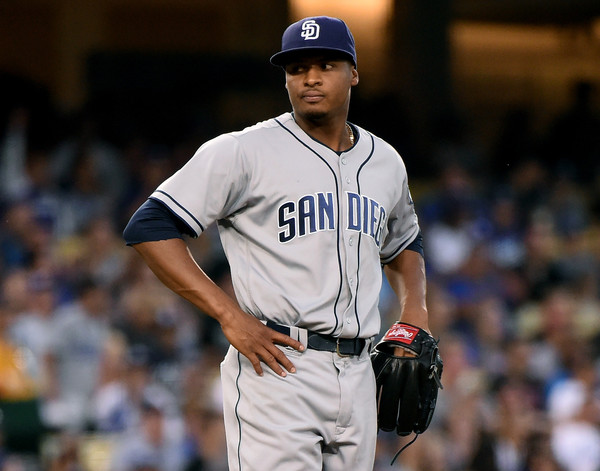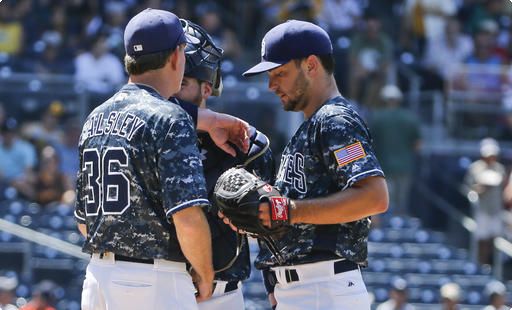The Three-Man Rotation, Revisited


Relievers
And what about the team’s current relievers?
With them, the question shouldn’t focus on how much better they could perform if they only had to face a lineup once; it would be incredibly rare for a bullpen arm to throw under the expectation of that sort of workload.
However, the TMR requires that almost every pitcher on the staff is capable of throwing multiple innings, something some are not as accustomed to as others. Could the team’s current collection of bullpen arms maintain their performance under such an increase in innings?
Before we do any data diving to answer just that question, I would be remiss not to mention the assumptions I had to make in order to work with the data itself. Because of small sample sizes over the last two years, I extended the involved time period to encompass the entirety of players’ careers. This allowed for more meaningful results to be gained from the research. This sample-size issue also resulted in some players (for example, Buddy Baumann and Miguel Diaz) being left out of the analysis altogether, as both lack the big-league service to contribute to this analysis.
Also, the usage of relievers, theoretically at least, should slant these numbers in favor of multi-inning appearances. If a reliever struggles out of the gate, he is likely to be pulled before returning to the mound for a second inning. This means that any multi-inning performance could be affected by a reliever having his stuff working that day, which translates to more consistent success in these outings in comparison to shorter ones.
However, I say all of these things only so readers are aware of them. I still believe there are worthwhile conclusions to be drawn from these relievers’ statistical histories, ones that will be helpful to this investigation as a whole.
So, without further ado, let’s get to the data. Using the same FanGraphs’ split tools that were used for the starters, I zeroed in on each outing of two innings or more made by the pitchers in question. These numbers could then be compared to their career numbers from outings of less than two innings to pinpoint any dramatic differences caused by an increased workload on a given day. As before, green highlights point to statistical improvement in multi-inning situations, and red ones do the opposite.
The results were resounding. Take one look at the chart and a single thought pops into your brain: that’s a lot of green! In a turn of events that even I did not expect, the pitchers (with the exception of Keith Hessler, who may require some counseling after seeing his own hideous numbers) not only maintained their performance, but actually demonstrated substantial improvements, even when accounting for the potential bias towards longer outings mentioned earlier. This demonstrates that the Padres’ current relievers are more than capable of continuing to miss bats and get outs if called upon to throw more than a single inning on any given day. While I admit consistent multi-inning appearances may alter the results some, the data appears more than promising for the TMR’s prospects.

A final side note: Friar fans may have noticed the omission of one important arm from the group. No, I did not leave Ryan Buchter off the list by mistake, nor do I somehow believe he will not be a part of the 2017 Padres. Barring a trade, Buchter and his 11.14 K/9 and 2.86 ERA will absolutely be taking the mound at Petco Park on a consistent basis this upcoming season. However, Buchter has also made just one appearance in his career of two innings or more. While he performed admirably, striking out four in two hitless frames, that is the definition of a sample too small to draw meaningful conclusions from. This is not a knock against him under the TMR structure though, as the rotation would regularly allow for him to throw individual innings at the backend of games. And who knows? Maybe Buchter has some multi-inning magic stockpiled in that left-handed missile launcher of his that would allow him to contribute even more so as he adjusted to the schedule of the TMR.
The Pragmatic Dream
All of that leaves us, some 1800 words later, on the cusp of redesigning the traditional pitching rotation (exciting, isn’t it?). The final hurdle, as it turns out, is a fairly easy one to clear. Where two months ago we had a hazy outline of the TMR in action, we now have a collection of evaluated players ready to be assigned to roles within the system. Using the data we’ve compiled on the Padres current pitching options, we can build a projected TMR with little more than the firing of a few baseball-oriented synapses. A version I find very workable, modeled over a typical three-game series, can be seen below:
Game 1
Starter: Trevor Cahill (3 innings pitched)
Relievers: Christian Friedrich (3 IP), Cesar Vargas (2 IP), Ryan Buchter (1 IP)
Game 2
Starter: Clayton Richard (3 IP)
Relievers: Jarred Cosart (2 IP), Brandon Maurer (2 IP), Carter Capps (2 IP)
Game 3
Starter: Luis Perdomo (3 IP)
Relievers: Jhoulys Chacin (3 IP), Kevin Quackenbush (1 IP), Brad Hand (2 IP)
On top of that, don’t forget the eventual addition of not only on-the-mend hurlers Colin Rea and Robbie Erlin, nor potential free agent signees such as Jered Weaver, Jake Peavy, or Greg Holland, but also San Diego’s budding super-utility man, Christian Bethancourt, who the Padres are looking to convert from the backstop to the mound. Bethancourt has spent the winter pitching in Panama, and the results have been encouraging. According to a recent report from MLB.com, “He hasn’t allowed a run in three one-inning appearances, with two strikeouts and no walks. His fastball has ranged from 93 to 97 mph, and hitters are just 2-for-11 against him.” For those who are interested, you can catch a video of the ongoing experiment here.
Combined with the healthy resurgence of even one of Rea or Erlin, and/or the addition of another buy-low free agent arm, Bethancourt could add a versatile thirteenth option to manager Andy Green’s arsenal on both sides of the ball, serving as a weapon that takes the TMR from thought-provoking to legitimately threatening.
As stated plenty of times before, the Padres are going to be a bad baseball team in 2017. Even if prospects such as Hunter Renfroe and Manuel Margot play like All-Stars right out of the gate, the team’s ceiling remains nothing more than a fourth-place finish in a tough NL West. This ultimately means there’s no reason not to attempt to vault to the forefront of baseball’s future, especially if such a leap allows for the continuation of the player development process necessary for upcoming pennant chases.
To reference Aldous Huxley again, while implementing the TMR may be a Brave New World, it certainly seems to be a fastball-filled frontier worth exploring further.
Noah is a current undergraduate at the University of San Diego. In addition to his classes as a Business Economics student, Noah serves as the scouting director for the nationally-ranked USD baseball team and as an NFL correspondent with The Mighty 1090. You can follow him on Twitter @thebackseatlamp
This isn’t an original idea…I saw an article in the 1960’s that Gene Mauch wrote expressing essentially the same thing. He said baseball was moving in that direction. His proposal was slightly different given the times. A 9 man staff with each game having a set starter, middle reliever, and final reliever each pitching 3 innings every 3rd day. It was in an annual..The Fireside Book of Baseball..He was clearly ahead of his times.
“Fortune favors the bold.” I’ve read about this before and found it intriguing. Somebody’s got to lead, come on Padres jump out in front of this. At least a month or two.
Gotta also think about the hitting side of the equation. If you’re moving out the starter in 3 innings, if he is due to bat with runners on base and a chance to score, that’s one more bench player you may end up using to pinch hit. Could be a problem where you use up players too fast.
The one person that could make the TMR work is Bethancourt. Having a bench player that could also pitch is like having a 13th pitcher.
I love the idea, but it would take a bold team to try it. I think it makes more sense after the trade deadline after they’ve traded or cut some of the one year guys. I think this is a good model to bring some of the younger guys along.